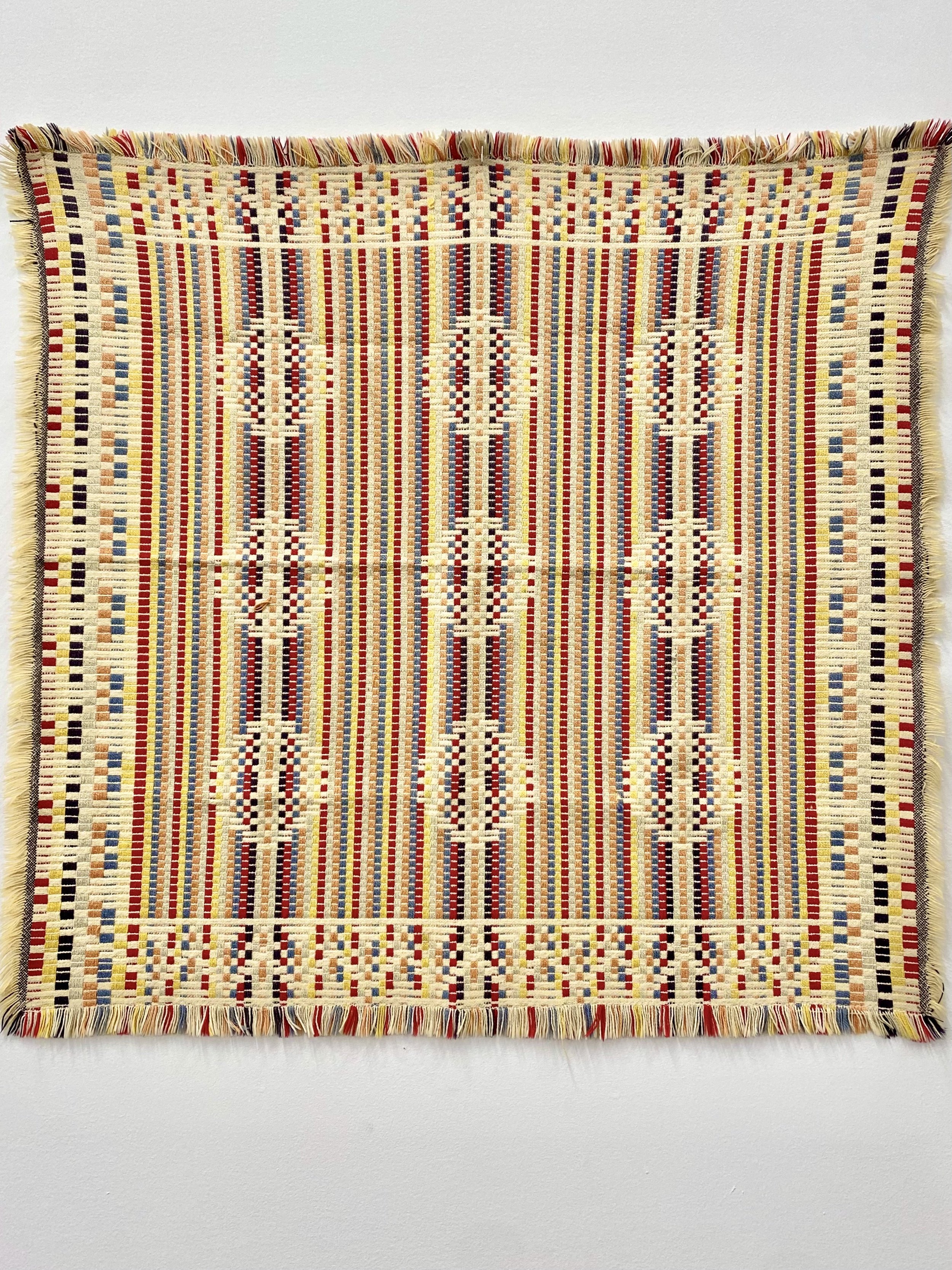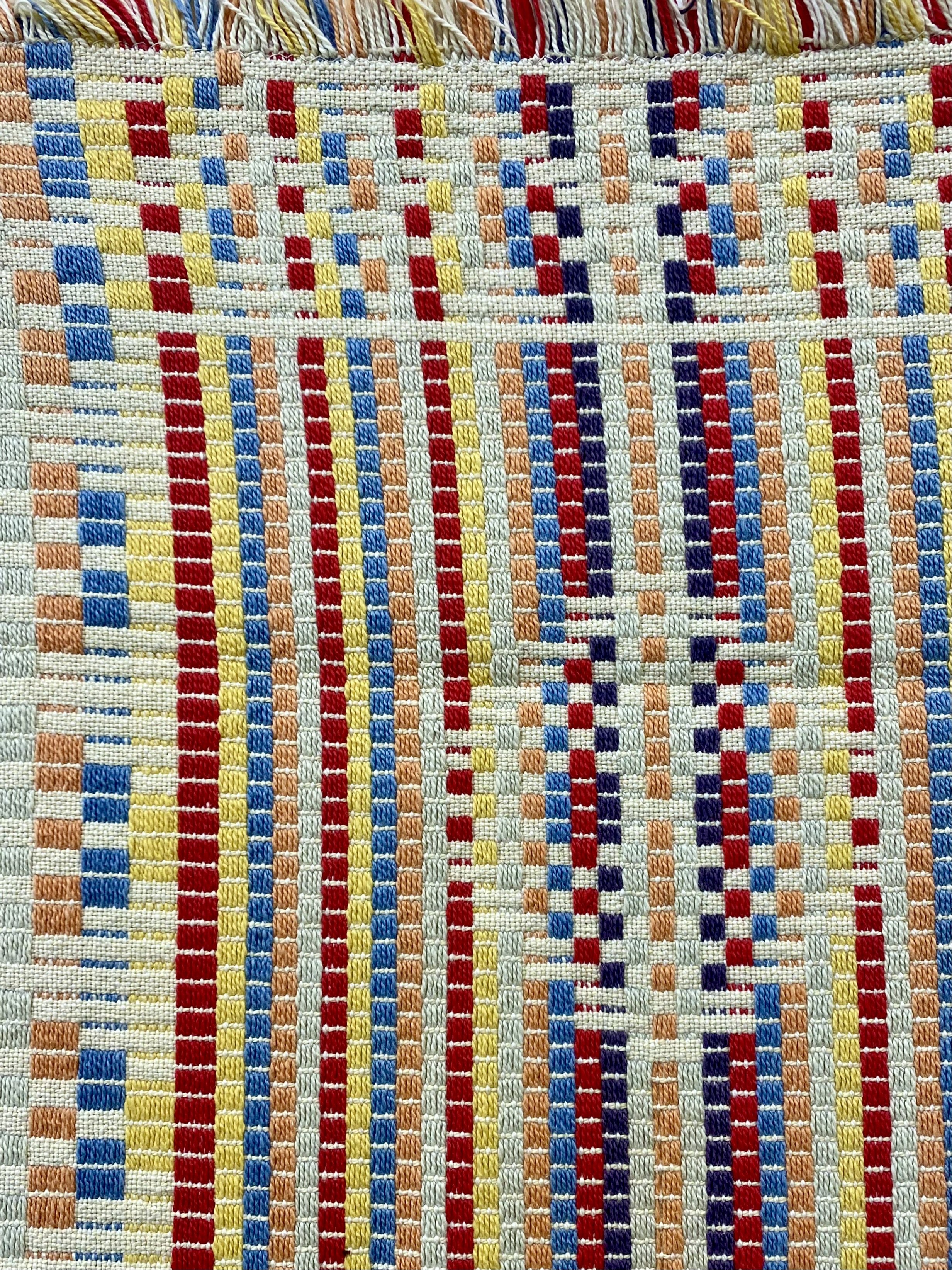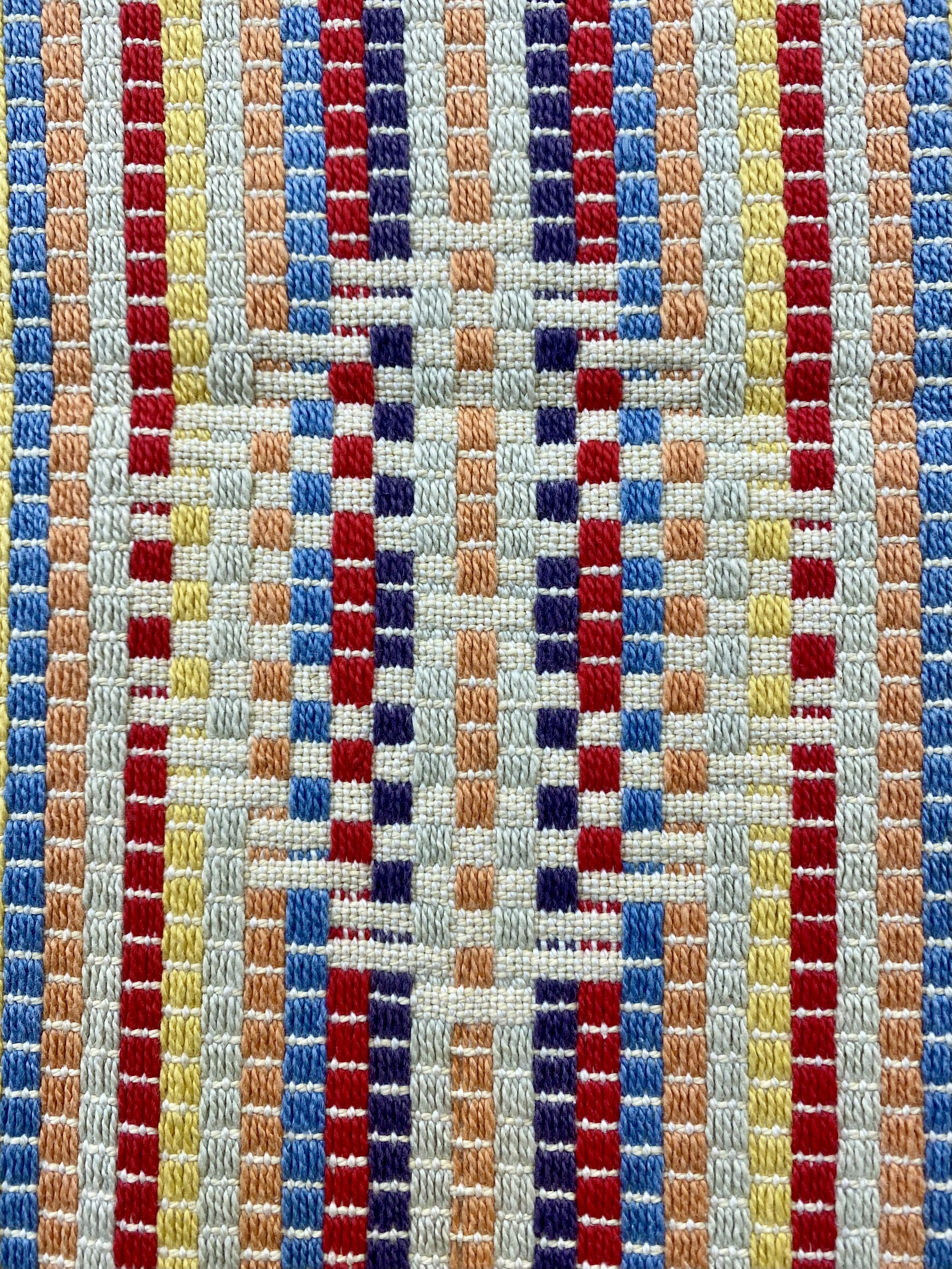 Image 1 of 3
Image 1 of 3

 Image 2 of 3
Image 2 of 3

 Image 3 of 3
Image 3 of 3




"Monk's Belt" Throw
A cheerful throw or coverlet in the "Monk's Belt" pattern, early-to-mid 20th century. This ancient weaving technique originated in Northern Europe in medieval times. It remains very popular in Sweden, especially the southern Skåneland region, where it is called Munkabälte. Scandinavian immigrants brought the pattern with them to the upper Midwest in the 19th century.
Monk's Belt uses a four-shaft loom set-up, in which two shafts are used to form the base weave (typically linen), and two for the loosely-bound surface patterns (in wool or cotton). The resulting fabric is typically contrasting, geometrical, and repetitive. The result seems both "indigenous" and strikingly modern at the same time.
A cheerful throw or coverlet in the "Monk's Belt" pattern, early-to-mid 20th century. This ancient weaving technique originated in Northern Europe in medieval times. It remains very popular in Sweden, especially the southern Skåneland region, where it is called Munkabälte. Scandinavian immigrants brought the pattern with them to the upper Midwest in the 19th century.
Monk's Belt uses a four-shaft loom set-up, in which two shafts are used to form the base weave (typically linen), and two for the loosely-bound surface patterns (in wool or cotton). The resulting fabric is typically contrasting, geometrical, and repetitive. The result seems both "indigenous" and strikingly modern at the same time.
A cheerful throw or coverlet in the "Monk's Belt" pattern, early-to-mid 20th century. This ancient weaving technique originated in Northern Europe in medieval times. It remains very popular in Sweden, especially the southern Skåneland region, where it is called Munkabälte. Scandinavian immigrants brought the pattern with them to the upper Midwest in the 19th century.
Monk's Belt uses a four-shaft loom set-up, in which two shafts are used to form the base weave (typically linen), and two for the loosely-bound surface patterns (in wool or cotton). The resulting fabric is typically contrasting, geometrical, and repetitive. The result seems both "indigenous" and strikingly modern at the same time.